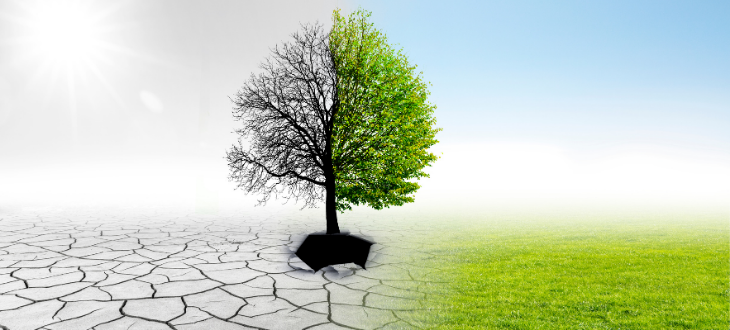Climate Change and the Middle East
Climate Change and the Middle East

Program Dates:
June 29 - August 4, 2021
Language of Instruction: English
Academic Credits: 2
Application Deadline:
June 15, 2021
What is in store for the Middle East and North Africa (MENA), already amongst the hottest, driest parts of the planet, as the Post-Normal Climate Condition sets in? How could three varieties of climate inequality further complicate prognoses for the region? How might the nexus between prolonged droughts, agricultural failure, food insecurity, forced migration, climate refugees and national (in) security play out across MENA? And could oil-rich countries in the region have a positive role in the energy transition from fossil fuels to renewableswhich many see as the only avenue away from climate chaos?
Dan Rabinowitz, a cultural anthropologist known internationally for his work on culture, society and the environment in the Middle East, and author of The Power of Deserts: Climate Change, the Middle East and the Promise of a Post-Oil Era (Stanford University Press, 2020) explores these issues and more in a vivid and dynamic online course from Tel-Aviv University.
About the Course
The course examines the impact climate change already has and is projected to exert across the Middle East in future; analyzes three types of climate inequality prevalent in the region; Look at the nexus between climate change, forced migration, national security and conflict; and explores the potential of the region to play an active part in the ongoing transition from fossil fuels to renewables and thus to become part of the solution to the climate crisis.
This course will run for six consecutive weeks in the summer of 2021. Each week participants will be asked to watch two a-synchronous, pre-recorded lectures (45 minutes each) and take part in two synchronous sessions (75 minutes each). The synchronous sessions will include discussions of the lectures, q+a, work in groups and work on individual and group projects, occasional meetings with guest lecturers and so on.
Following the initial introductory synchronic session, the course will hold 4 main substantive parts with a total of 11 learning units.
Part 1 (learning units 1-2) briefly introduces climate modelling, surveys climate predictions for key states in the Middle East and examines the agricultural and economic consequences of those prognoses.
Part 2 (learning units 3-5) introduces climate inequality as a generic concept, then analyses how climate change might exacerbate three types of gaps across the region: divergent levels of CO2 emissions; different levels of exposure and vulnerability to global warming; and variance in the commitment to climate action.
Part 3 (learning units 6-8) looks at how climate change is already pressurizing agriculture in various parts of the Middle East, inducing food shortages, rural flight, insecurity and conflict; and how climate-induced crises of the types that hit Syria and Sudan in recent decades could be more prevalent in future.
Part 4 (learning 9-11) introduces the notion of Peak-oil, highlights the immense potential of the Middle East for solar power, and sketches a putative strategy that could position the six oil-rich kingdoms by the Persian Gulf in the forefront of the global transformation from fossil fuels to renewables.
Structure of the course:
-
Part 1 (units 1-3) briefly introduces climate modelling, surveys climate predictions for key states in the Middle East and examines the agricultural and economic consequences of those prognoses.
-
Part 2 (units 4-6) introduces climate inequality as a generic concept, then analyses how climate change might exacerbate three types of gaps across the region: divergent levels of CO2 emissions; different levels of exposure and vulnerability to global warming; and variance in the commitment to climate action.
-
Part 3 (units 7-9) looks at how climate change is already pressurizing agriculture in various parts of the Middle East, inducing food shortages, rural flight, insecurity and conflict; and how climate-related crises of the types that hit Syria and Sudan in recent decades could be the new normal.
-
Part 4 (units 10-13) introduces the notion of Peak-oil, highlights the immense potential of the Middle East for solar power, and sketches a putative strategy that could position the six oil-rich kingdoms by the Persian Gulf in the forefront of the global transformation from fossil fuels to renewables.


